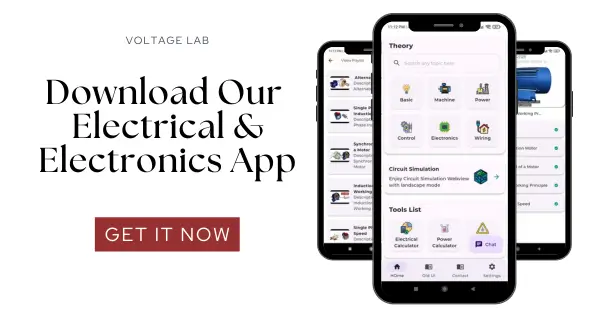Knowing how a power plant works is key to understanding how we get electricity. This topic explores different methods and technologies used in power plants, like turbines and gas turbines. It helps us see how energy is converted into electricity, why some methods are better than others, and how this affects our energy choices and the environment.
Table of Contents
A Few Words About Power Generation Centers
Power generation centers, often referred to as power stations, are complex facilities that include various components, with generators being among the most critical. Generators convert mechanical energy into electrical energy using various mechanisms.
You might wonder, how exactly is this generator made to rotate? The answer to this question will become clear as you read through the entire article 🙂
What is a Turbine?
A turbine is essentially a machine or a prime mover that generates rotational motion through the continuous change in momentum of a fluid.
In simple terms, a turbine is a rotating mechanical device that extracts energy from fluid flow and converts it into useful work.
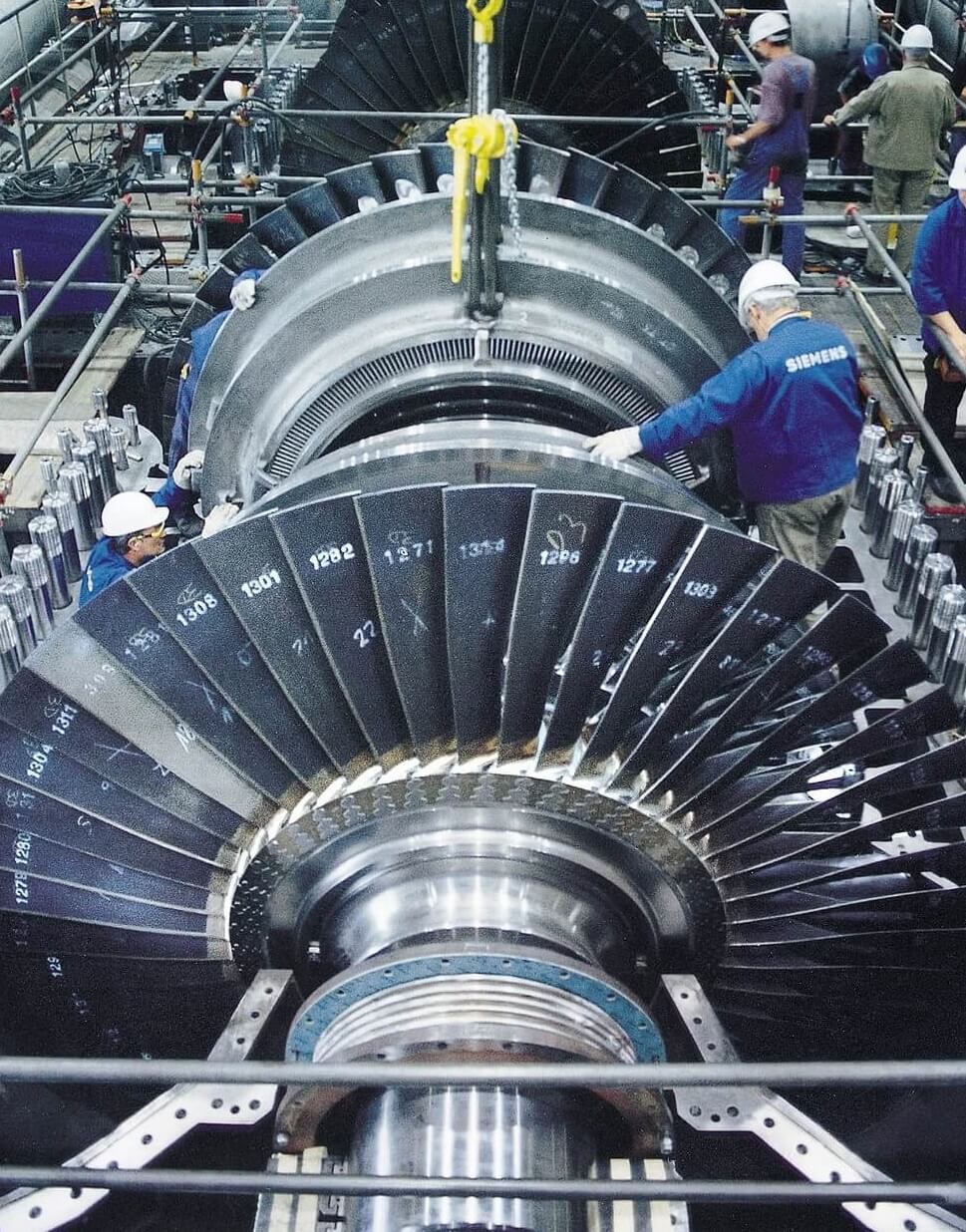
Electric power is generated using a turbine connected to a generator. Various types of turbines include steam turbines, gas turbines, and water turbines.
For example, at the Ashuganj Power Station, six units use steam turbines, and the remaining two units use gas turbines.
Steam turbines are ideal prime movers and are widely used. Large steam turbines are employed to drive generators in power plants.
Hydraulic Power Plant
When discussing hydraulic power plants, the first example that comes to mind is the Kaptai Power Plant. Turbines are driven by harnessing the potential energy of water.
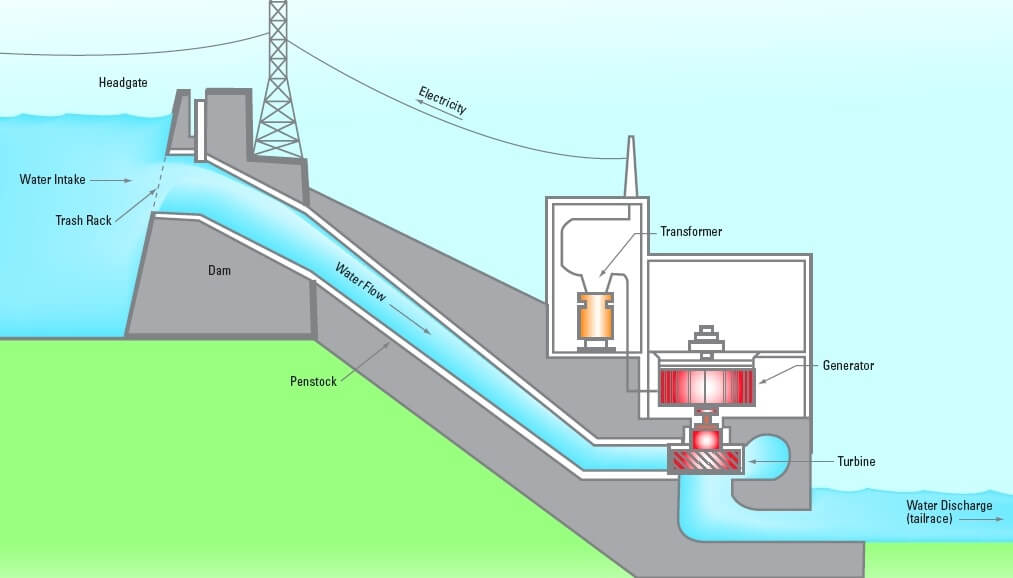
The term ‘hydraulic’ refers to something operated by water. Therefore, the primary energy source for a hydraulic power plant is water. A hydraulic power plant is essentially a hydroelectric power plant.
In simpler terms, water is stored at a high altitude, and when released, it flows downward with great force. This flow of water spins the turbine’s blades, causing the turbine to rotate. The turbine’s shaft is firmly connected to the generator’s shaft, resulting in the generator’s rotation and electricity generation.
Thermal Power Plant
A thermal power plant is a type of power plant that converts thermal energy into electrical energy.
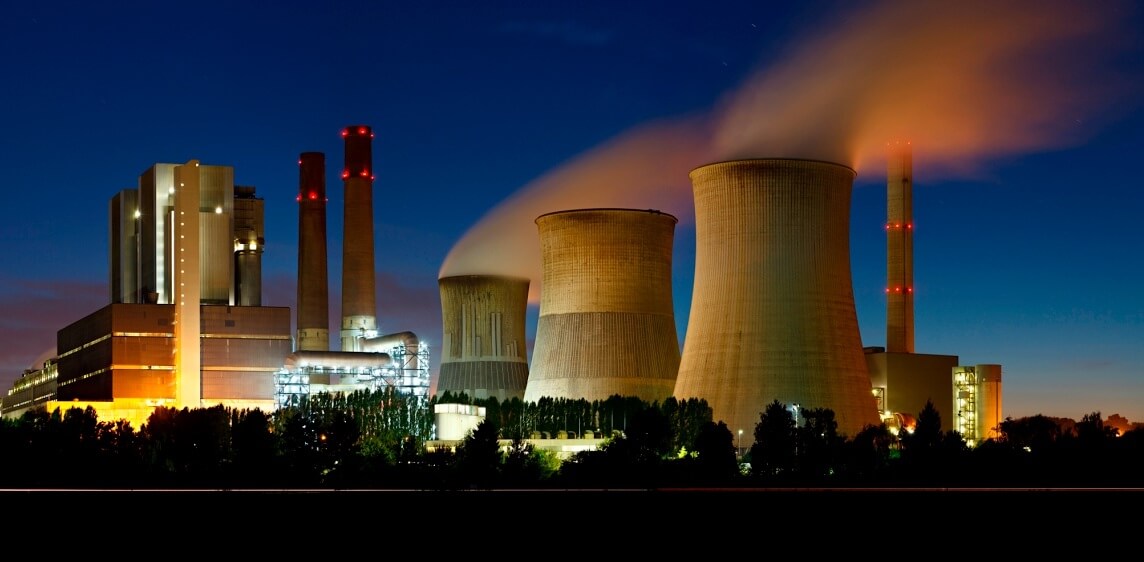
In a thermal power plant, water is converted into steam, a process carried out by a boiler. This steam is then directed towards the turbine at high speed, causing the turbine to rotate. As we know, the turbine is connected to the generator, resulting in electricity generation.
Nuclear Power Plant
A nuclear power station or nuclear energy center is a thermal power plant where the heat source is a nuclear reactor. A nuclear power plant is also referred to as a thermal power plant.
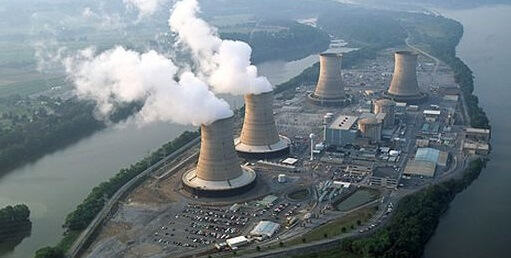
In a nuclear power plant, a nuclear reactor replaces the boiler. In the reactor, nuclear fission reactions occur, where numerous nuclei effortlessly split or one part influences another to release energy.
This process generates immense heat, which is then used to convert water into steam. The steam helps rotate the turbine, leading to the generator’s rotation and electricity generation.
Wind Power Plant
The term ‘wind’ refers to air, and wind power plants utilize the energy from air flow to generate electricity. Wind power relies on wind speed and direction.
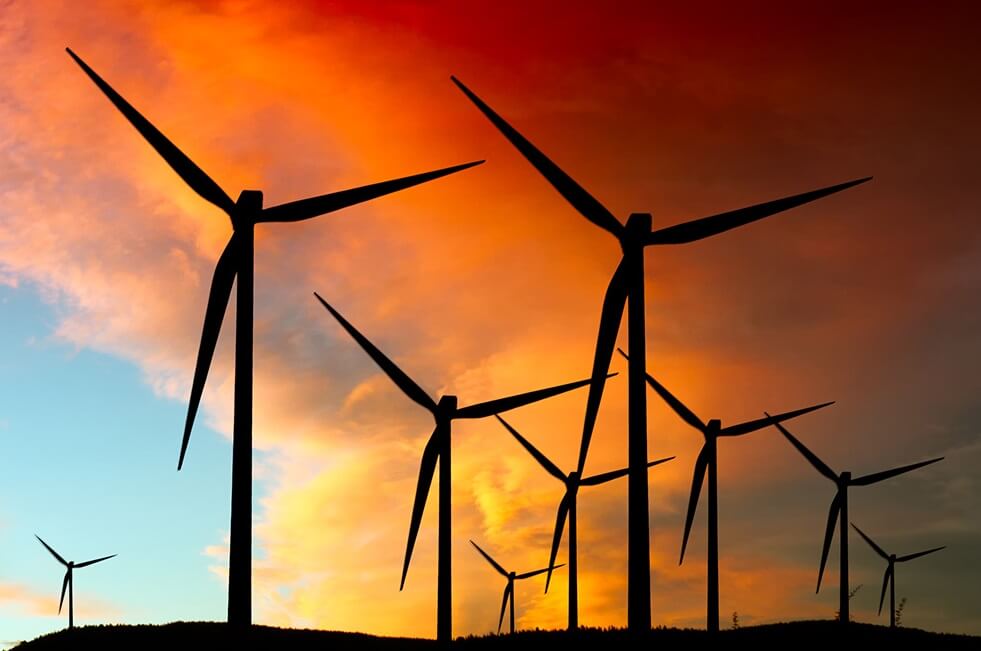
Similar to other power plants, wind power plants also rotate a turbine connected to a generator, producing electricity.
Solar Power Plant
Solar power refers to energy harnessed from sunlight. A solar power plant is a facility that converts sunlight into electrical energy. This conversion can be done directly using photovoltaics or indirectly using concentrated solar power.
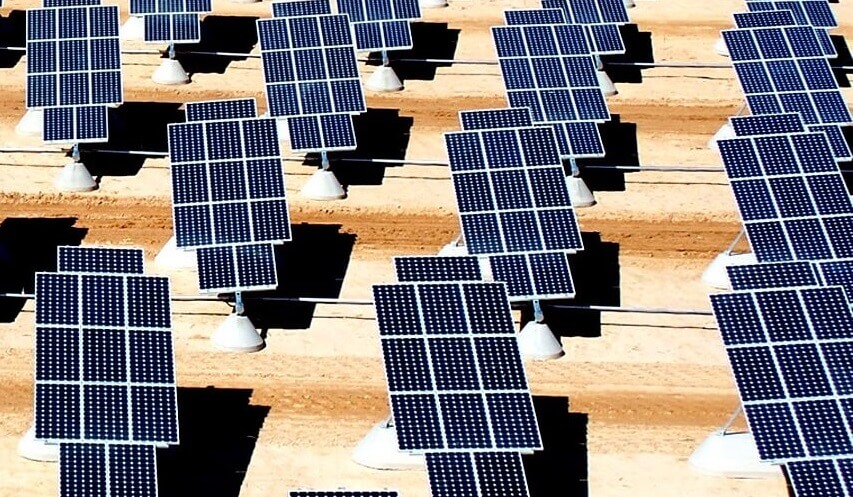
In concentrated solar power, lenses or mirrors and tracking systems are used to focus a large area of sunlight onto a specific point.
Photovoltaic cells primarily convert light energy into electrical energy.
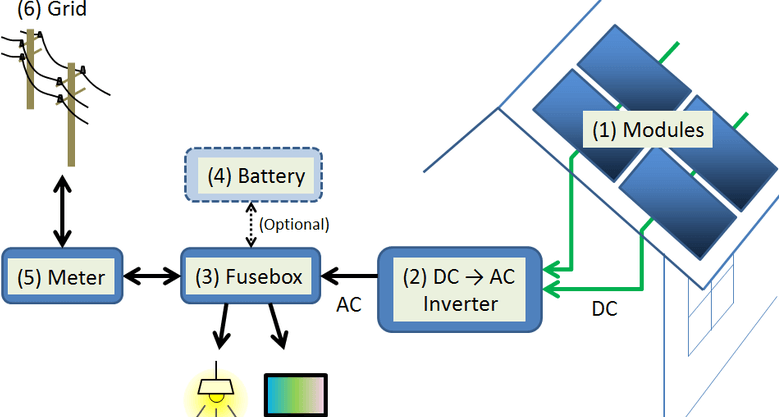
What is a Gas Turbine?
A gas turbine is a rotary engine that extracts energy from a flow of combustion gas. An example is a jet aircraft engine, which is typically large and powered by a turbofan, which is itself a type of gas turbine.
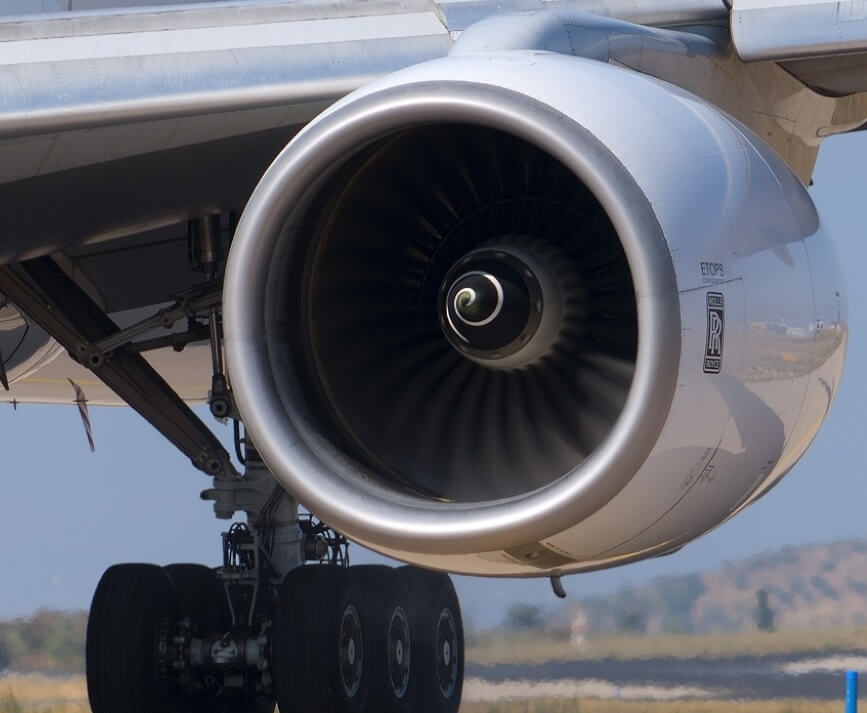
In the previous sections, we discussed various power plants. Every power plant has a turbine, except for solar power plants. Steam turbines, wind turbines, and water turbines are used to generate power in different plants, and gas turbines are essentially the practical application of these principles.
In a gas turbine engine, high-pressure gas is used to rotate the blades.
Gas Turbine Structure and Operation
The structure of a gas turbine is quite simple.
Compressor: It compresses the air coming through the intake into high pressure.
Combustion Chamber: It ignites the fuel, producing high-pressure, high-speed gas.
Turbine: It extracts energy from the high-pressure, high-speed gas flowing from the combustion chamber.
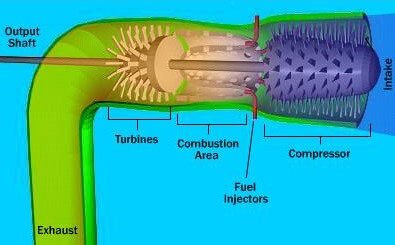
In the above image, we see an axial flow gas turbine, commonly used in helicopter rotors. Let’s briefly discuss how it works.
- Compressor: The compressor is a conical cylinder with small fan blades attached to it. It takes in air, which is low pressure upon entry, and compresses it to increase the pressure about 30 times.
- Combustion Chamber: High-pressure air enters the combustion chamber, where fuel is steadily injected from the fuel injector belt. Fuels like kerosene, jet fuel, propane, or other natural gases are used. Inside the chamber, the high-pressure air flows at about 100 mph, making combustion challenging. To resolve this, flame holders or cans, which are typically hollow and made of perforated heavy metal, are used in the combustion chamber.
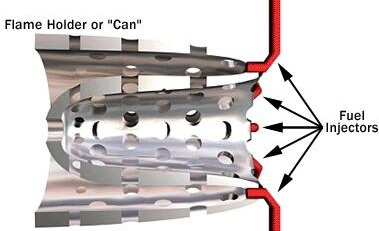
The injector is on the right side of the can, where compressed air enters through the perforations, and exhaust gas exits from the left side of the can.
- Turbine: The image below shows two sets of turbines.
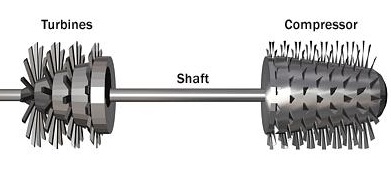
The first section drives the compressor directly. The turbine and compressor are connected by a shaft, so all three rotate together. The rear section of the turbine is connected directly to the output shaft, which is separate from the rest of the engine and can rotate freely.
This section is also known as the free-spinning section. After combustion in the combustion chamber, the hot gas produced rotates the free-spinning section, which can generate up to 1500 horsepower.
Advantages and Disadvantages of Gas Turbines
The primary reason gas turbine engines are used in jet aircraft, tanks, and various power plants is that they can generate much more power relative to their weight.
The power-to-weight ratio is a key factor. For instance, if you were to attach a piston engine that produces 1500 horsepower to a jet aircraft, it would be significantly larger and heavier. This is because a gas turbine engine weighs less and is much smaller in size compared to a piston engine.
Another advantage of gas turbine engines is their simplicity. Since there are fewer moving parts, there is less wear and tear.
Additionally, they require less maintenance and are easier to start and stop.
However, they are less fuel-efficient, with an average efficiency rate of about 35-45%.
The fuel cost is also higher, making gas turbines more expensive to operate.
Despite these drawbacks, gas turbines are widely used in various industries because they can be operated with various fuels, such as kerosene, jet fuel, propane, and natural gas.
Conclusion: Although gas turbines are not very efficient, they are preferred due to their high power-to-weight ratio, simplicity, ease of maintenance, and the wide range of fuel options available.

